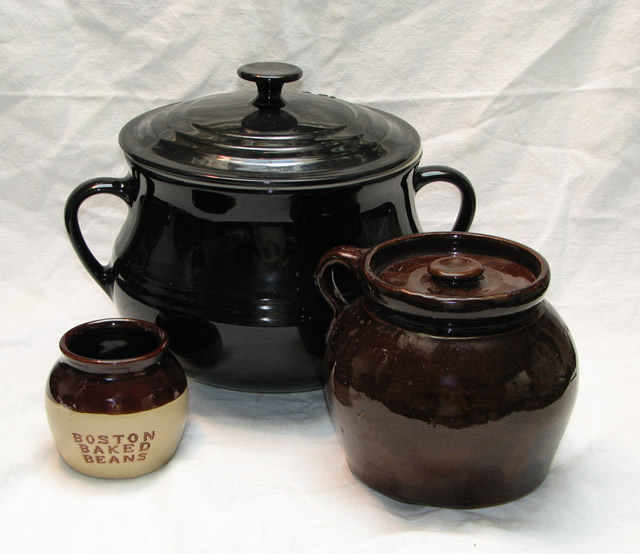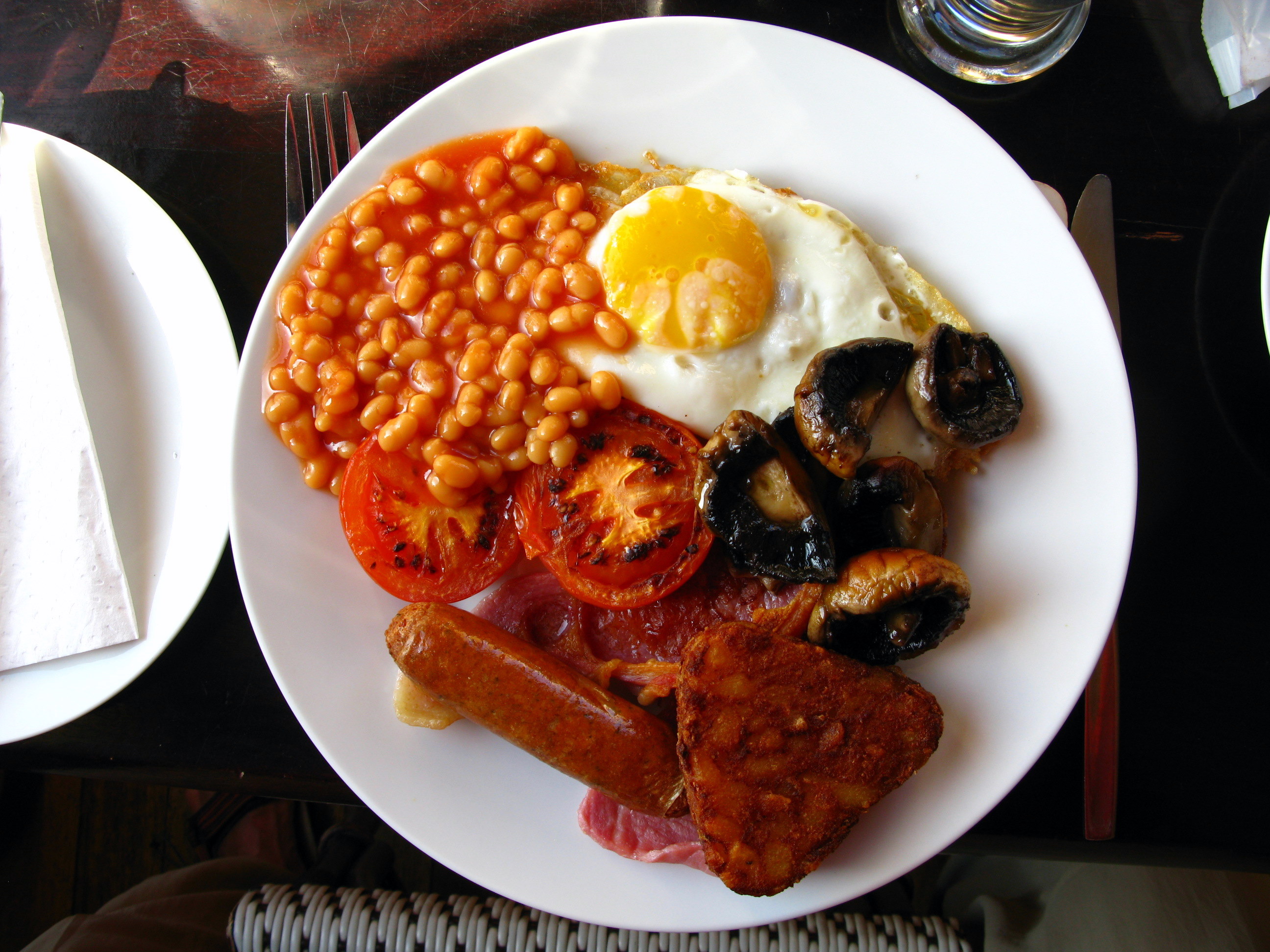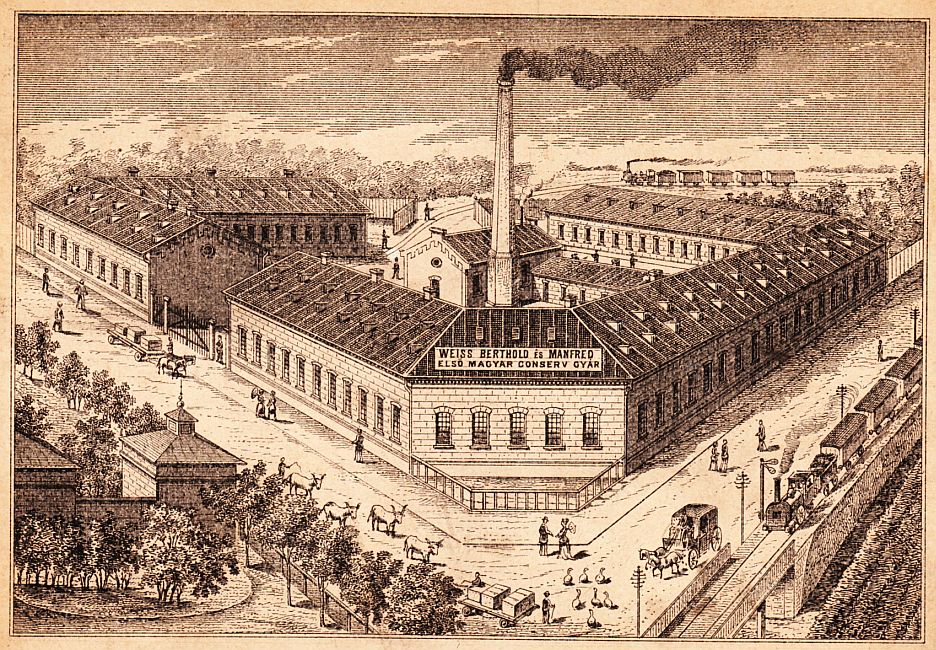|
Baked Beans
Baked beans is a dish traditionally containing white beans that are parboiled and then, in the US, baked in sauce at low temperature for a lengthy period. In the United Kingdom, the dish is sometimes baked, but usually stewed in sauce. Canned baked beans are not baked, but are cooked through a steam process. Baked beans occurred in Native American cuisine, and are made from beans indigenous to the Americas. It is thought that the dish was adopted and adapted by English colonists in New England in the 17th century and, through cookbooks published in the 19th century, spread to other regions of the United States and into Canada. However, the connection to Native American cuisine may be apocryphal, as legumes such as broad beans and lentils prepared in various sauces had been established in European cuisine long before the Middle Ages. Today, in the New England region of the United States, a variety of indigenous legumes are used in restaurants or in the home, such as Jacob's ... [...More Info...] [...Related Items...] OR: [Wikipedia] [Google] [Baidu] |
Fèves Au Lard
Fèves au lard, also called bines or haricots au lard, is a traditional Québécois dish. It is usually beans mixed with pieces of bacon and either molasses or maple syrup that is then slow cooked in the oven. Sometimes other ingredients are added. Fèves au lard are usually served as a side during breakfast, but they can also be served as a side during lunch or supper and they can be served as a meal. Fèves au lard is a traditional dish presented at sugar shacks during le temps des sucres in Québec and other French-speaking regions of Canada. This dish was inspired by cultural exchanges between Québécois and New Englanders during the 19th century. It is believed that Boston baked beans directly inspired Fèves au lard. (consulted 2021-02-02) It is also thought that this popular recipe ... [...More Info...] [...Related Items...] OR: [Wikipedia] [Google] [Baidu] |
Molasses
Molasses () is a viscous substance resulting from refining sugarcane or sugar beets into sugar. Molasses varies in the amount of sugar, method of extraction and age of the plant. Sugarcane molasses is primarily used to sweeten and flavour foods. Molasses is a major constituent of fine commercial brown sugar. It is also one of the primary ingredients used to distill rum. Sweet sorghum syrup is colloquially called ''sorghum molasses'' in the southern United States. Molasses has a stronger flavour than most alternative syrups. Name The word molasses comes from ''melaço'' in Portuguese, a derivative (intensifier) of ''mel'' (honey) with Latinate roots. Cognates include Ancient Greek μέλι (''méli'') (honey), Latin ''mel'', Spanish ''melaza'' (molasses), Romanian ''miere'' or ''melasă'', and French ''miel'' (honey). Cane molasses Cane molasses is an ingredient used in baking and cooking. It was popular in the Americas before the twentieth century, when it was plentiful and ... [...More Info...] [...Related Items...] OR: [Wikipedia] [Google] [Baidu] |
Full Breakfast
A full breakfast is a substantial cooked breakfast meal, often served in the United Kingdom and Ireland, that typically includes back bacon, sausages, eggs, black pudding, baked beans, some form of potato, tomatoes, mushrooms, toast, and a beverage such as coffee or tea. It appears in different regional variants and is referred to by different names depending on the area. While it is colloquially known as a "fry-up" in most areas of the UK and Ireland, it is usually referred to as a "full English" (often "full English breakfast"), a "full Irish", "full Scottish", "full Welsh", and "Ulster fry", in England, the Republic of Ireland, Scotland, Wales, and Northern Ireland, respectively. It is so popular in Great Britain and Ireland that many cafes and pubs offer the meal at any time of day as an "all-day breakfast". It is also popular in many Commonwealth nations. The full breakfast is among the most internationally recognised British dishes along with bangers and mash, shepher ... [...More Info...] [...Related Items...] OR: [Wikipedia] [Google] [Baidu] |
Navy Bean
The navy bean, haricot, pearl haricot bean, Boston bean, white pea bean, or pea bean is a variety of the common bean ('' Phaseolus vulgaris'') native to the Americas, where it was first domesticated. It is a dry white bean that is smaller than many other types of white beans, and has an oval, slightly flattened shape. It features in such dishes as baked beans, various soups such as Senate bean soup, and even pies. The green bean plants that produce navy beans may be either of the bush type or vining type, depending on which cultivar they are. History The name "Navy bean" is an American term coined because the US Navy has served the beans as a staple to its sailors since the mid-1800s. In Australia, navy bean production began during World War II when it became necessary to find an economical way of supplying a nutritious food to the many troops—especially American troops—based in Queensland. The United States military maintained a large base in Kingaroy and had many ba ... [...More Info...] [...Related Items...] OR: [Wikipedia] [Google] [Baidu] |
Convenience Food
Convenience food, also called tertiary processed food, is food that is commercially prepared (often through processing) to optimise ease of consumption. Such food is usually ready to eat without further preparation. It may also be easily portable, have a long shelf life, or offer a combination of such convenient traits. Although restaurant meals meet this definition, the term is seldom applied to them. Convenience foods include ready-to-eat dry products, frozen foods such as TV dinners, shelf-stable foods, prepared mixes such as cake mix, and snack foods. Bread, cheese, salted food and other prepared foods have been sold for thousands of years. Other types of food were developed with improvements in food technology. Types of convenience foods can vary by country and geographic region. Some convenience foods have received criticism due to concerns about nutritional content and how their packaging may increase solid waste in landfills. Various methods are used to reduce the un ... [...More Info...] [...Related Items...] OR: [Wikipedia] [Google] [Baidu] |
Canning
Canning is a method of food preservation in which food is processed and sealed in an airtight container (jars like Mason jars, and steel and tin cans). Canning provides a shelf life that typically ranges from one to five years, although under specific circumstances, it can be much longer. A freeze-dried canned product, such as canned dried lentils, could last as long as 30 years in an edible state. In 1974, samples of canned food from the wreck of the ''Bertrand'', a steamboat that sank in the Missouri River in 1865, were tested by the National Food Processors Association. Although appearance, smell, and vitamin content had deteriorated, there was no trace of microbial growth and the 109-year-old food was determined to be still safe to eat. History and development French origins During the first years of the Napoleonic Wars, the French government offered a hefty cash award of 12,000 francs to any inventor who could devise a cheap and effective method of preserving l ... [...More Info...] [...Related Items...] OR: [Wikipedia] [Google] [Baidu] |
Fourth Of July
Independence Day (colloquially the Fourth of July) is a federal holiday in the United States commemorating the Declaration of Independence, which was ratified by the Second Continental Congress on July 4, 1776, establishing the United States of America. The Founding Father delegates of the Second Continental Congress declared that the Thirteen Colonies were no longer subject (and subordinate) to the monarch of Britain, King George III, and were now united, free, and independent states. The Congress voted to approve independence by passing the Lee Resolution on July 2 and adopted the Declaration of Independence two days later, on July 4. Independence Day is commonly associated with fireworks, parades, barbecues, carnivals, fairs, picnics, concerts, baseball games, family reunions, political speeches, and ceremonies, in addition to various other public and private events celebrating the history, government, and traditions of the United States. Independence Day is the n ... [...More Info...] [...Related Items...] OR: [Wikipedia] [Google] [Baidu] |
American Revolutionary War
The American Revolutionary War (April 19, 1775 – September 3, 1783), also known as the Revolutionary War or American War of Independence, was a major war of the American Revolution. Widely considered as the war that secured the independence of the United States, fighting began on April 19, 1775, followed by the Lee Resolution on July 2, 1776, and the Declaration of Independence on July 4, 1776. The American Patriots were supported by the Kingdom of France and, to a lesser extent, the Dutch Republic and the Spanish Empire, in a conflict taking place in North America, the Caribbean, and the Atlantic Ocean. Established by royal charter in the 17th and 18th centuries, the American colonies were largely autonomous in domestic affairs and commercially prosperous, trading with Britain and its Caribbean colonies, as well as other European powers via their Caribbean entrepôts. After British victory over the French in the Seven Years' War in 1763, tensions between the motherland and he ... [...More Info...] [...Related Items...] OR: [Wikipedia] [Google] [Baidu] |
Pittsburgh Post-Gazette
The ''Pittsburgh Post-Gazette'', also known simply as the PG, is the largest newspaper serving metropolitan Pittsburgh, Pennsylvania. Descended from the ''Pittsburgh Gazette'', established in 1786 as the first newspaper published west of the Allegheny Mountains, the paper formed under its present title in 1927 from the consolidation of the ''Pittsburgh Gazette Times'' and ''The Pittsburgh Post''. The ''Post-Gazette'' ended daily print publication in 2018 and has cut down to two print editions per week (Sunday and Thursday), going online-only the rest of the week. In the 2010s, the editorial tone of the paper shifted from liberal to conservative, particularly after the editorial pages of the paper were consolidated in 2018 with '' The Blade'' of Toledo, Ohio. After the consolidation, Keith Burris, the pro-Trump editorial page editor of '' The Blade'', directed the editorial pages of both papers. Early history ''Gazette'' The ''Post-Gazette'' began its history as a four-page w ... [...More Info...] [...Related Items...] OR: [Wikipedia] [Google] [Baidu] |
Bush Brothers And Company
Bush Brothers and Company is a family-owned corporation best known for its Bush's Best brand canned baked beans. The company produces approximately 80 percent of the canned baked beans consumed in the United States, representing estimated annual sales in excess of $400 million and the processing of more than 55 million pounds of beans per year. In addition, the company also offers other canned beans (black, garbanzo, pinto, and refried), as well as peas, hominy, and cut green beans. Based in Knoxville, Tennessee, Bush Brothers operates plants in Augusta, Wisconsin and Chestnut Hill, Tennessee. Its canned goods are sold through retail food outlets and food service operators throughout the United States and Canada. History In 1904, A. J. (Andrew Jackson) Bush entered a partnership with the Stokely family to open a tomato cannery in Chestnut Hill, Tennessee. His cannery proved so profitable that, by 1908, he was able to buy out the Stokelys' interest and establish his own independent ... [...More Info...] [...Related Items...] OR: [Wikipedia] [Google] [Baidu] |
Corn Syrup
Corn syrup is a food syrup which is made from the starch of corn (called maize in many countries) and contains varying amounts of sugars: glucose, maltose and higher oligosaccharides, depending on the grade. Corn syrup is used in foods to soften texture, add volume, prevent crystallization of sugar, and enhance flavor. Corn syrup is not the same as from high-fructose corn syrup (HFCS), which is manufactured from corn syrup by converting a large proportion of its glucose into fructose using the enzyme D-xylose isomerase, thus producing a sweeter substance. The more general term glucose syrup is often used synonymously with corn syrup, since glucose syrup in the United States is most commonly made from corn starch. Technically, glucose syrup is any liquid starch hydrolysate of mono-, di-, and higher-saccharides and can be made from any source of starch: wheat, tapioca and potatoes are the most common other sources. Commercial preparation Historically, corn syrup was produced ... [...More Info...] [...Related Items...] OR: [Wikipedia] [Google] [Baidu] |







